









































EVA (478 in Arabic) seeks to bridge cultures by merging Arabic typography with English design.
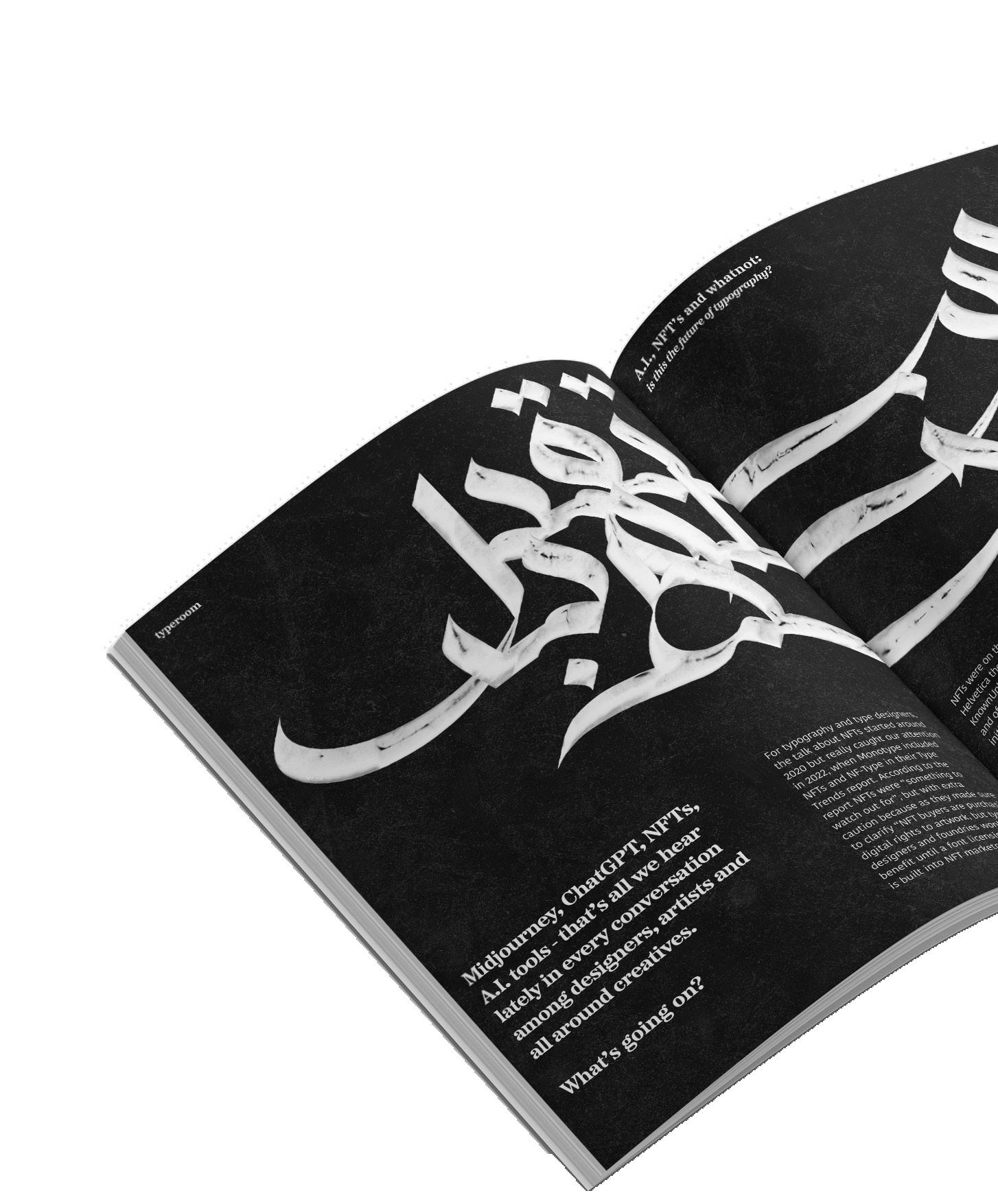

This amalgamation serves as a visual language that speaks to diverse audience, fostering a deeper understanding and appreciation of both Arabic and Western typography.
It aims to not just represent Arabic typography but to reimagine it. It endeavours to push the boundareis of traditional typography, presenting it in innovative and engaging ways that resonate with both Arabic and non-Arabic readers.

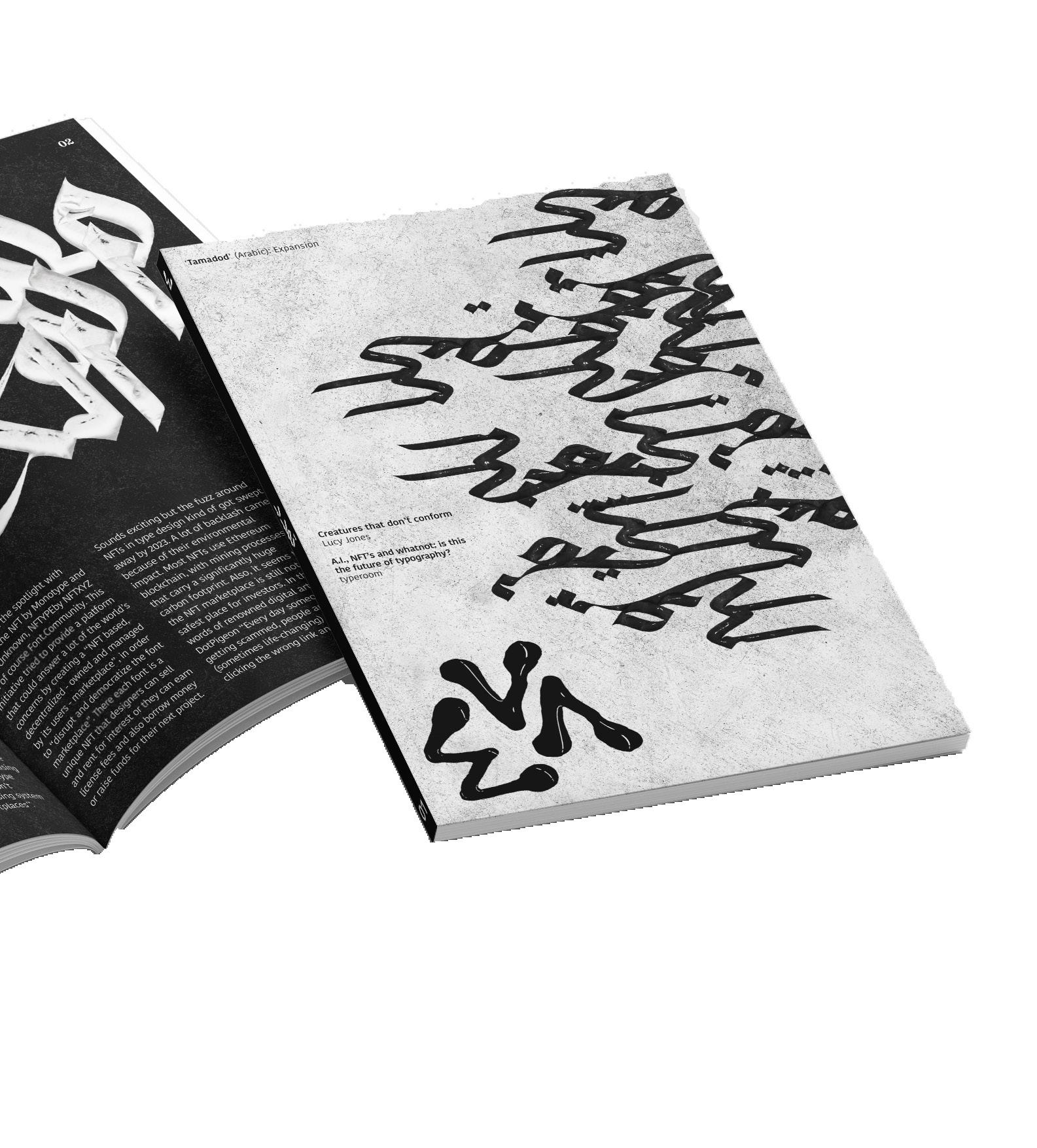
This approach invites exploration and experimentation, showcasing the richness and versatility of Arabic script whilst enriching the local design landscape and encouraging designers to explore new avenues of expression.
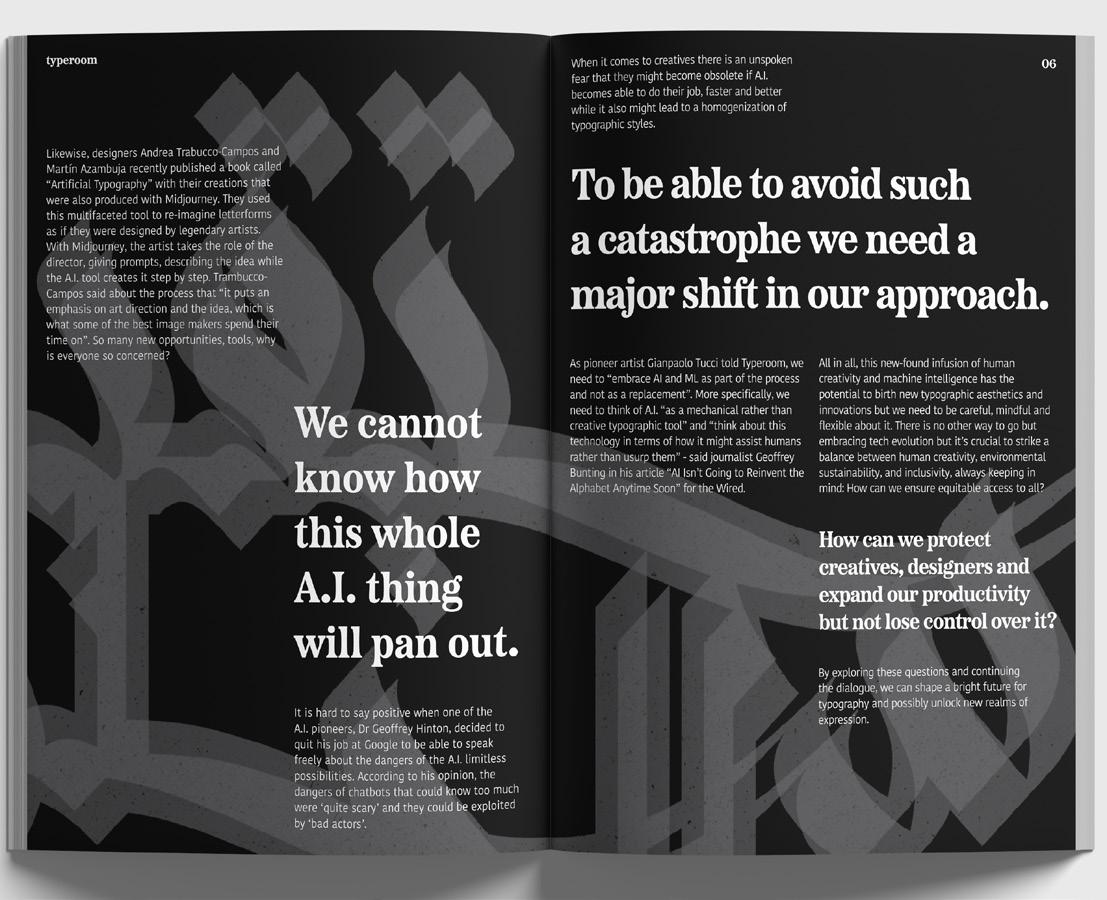


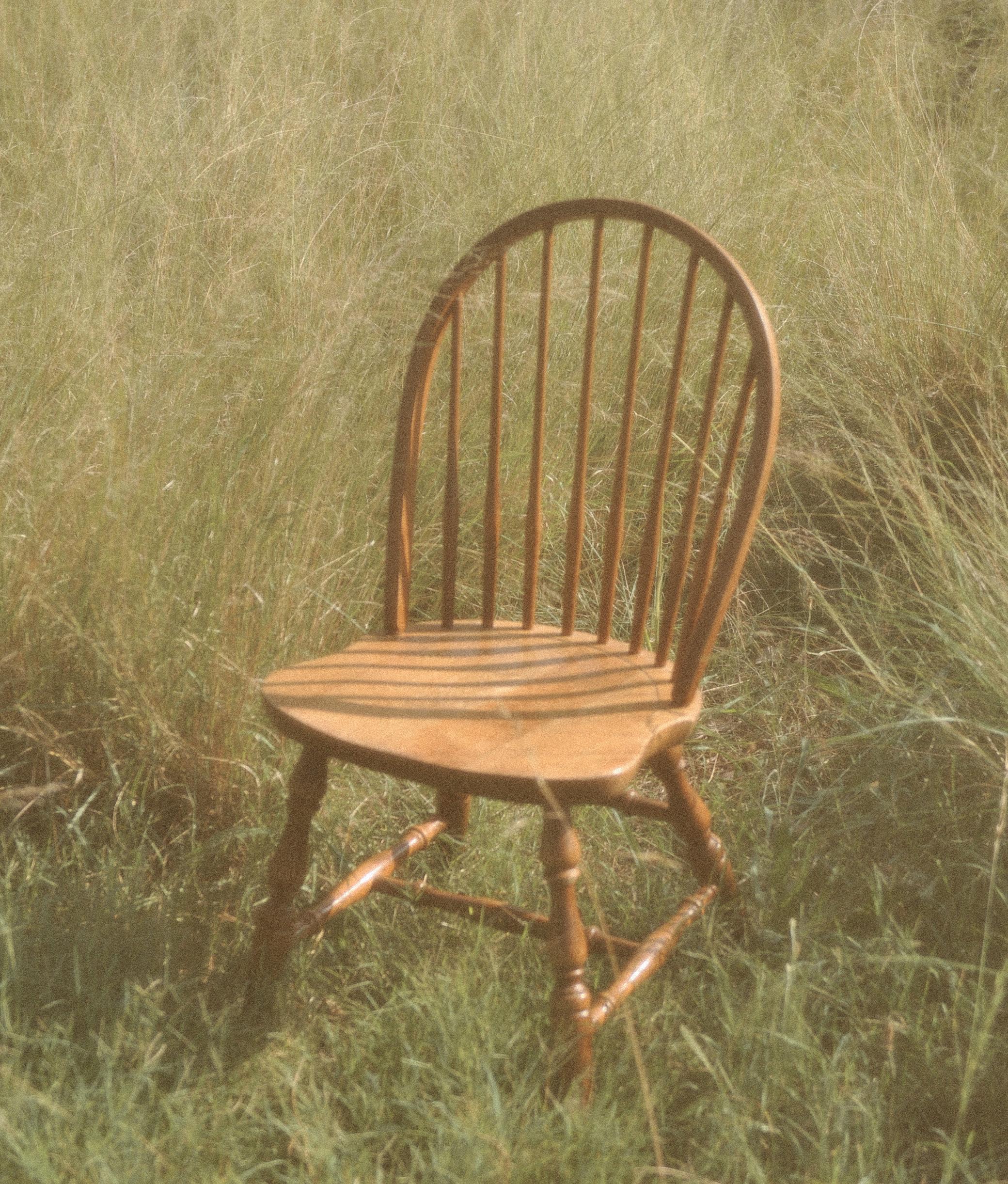

This fashion advertorial centres around a handcrafted dress that I made for my textiles HSC major work. Originally inspired by the issue of coral bleaching, the dress is now portrayed in a more dreamy, relaxed way to advertise its aesthetic appeal. While my design practice is still evolving, I intend to pursue fashion photography more in the future.


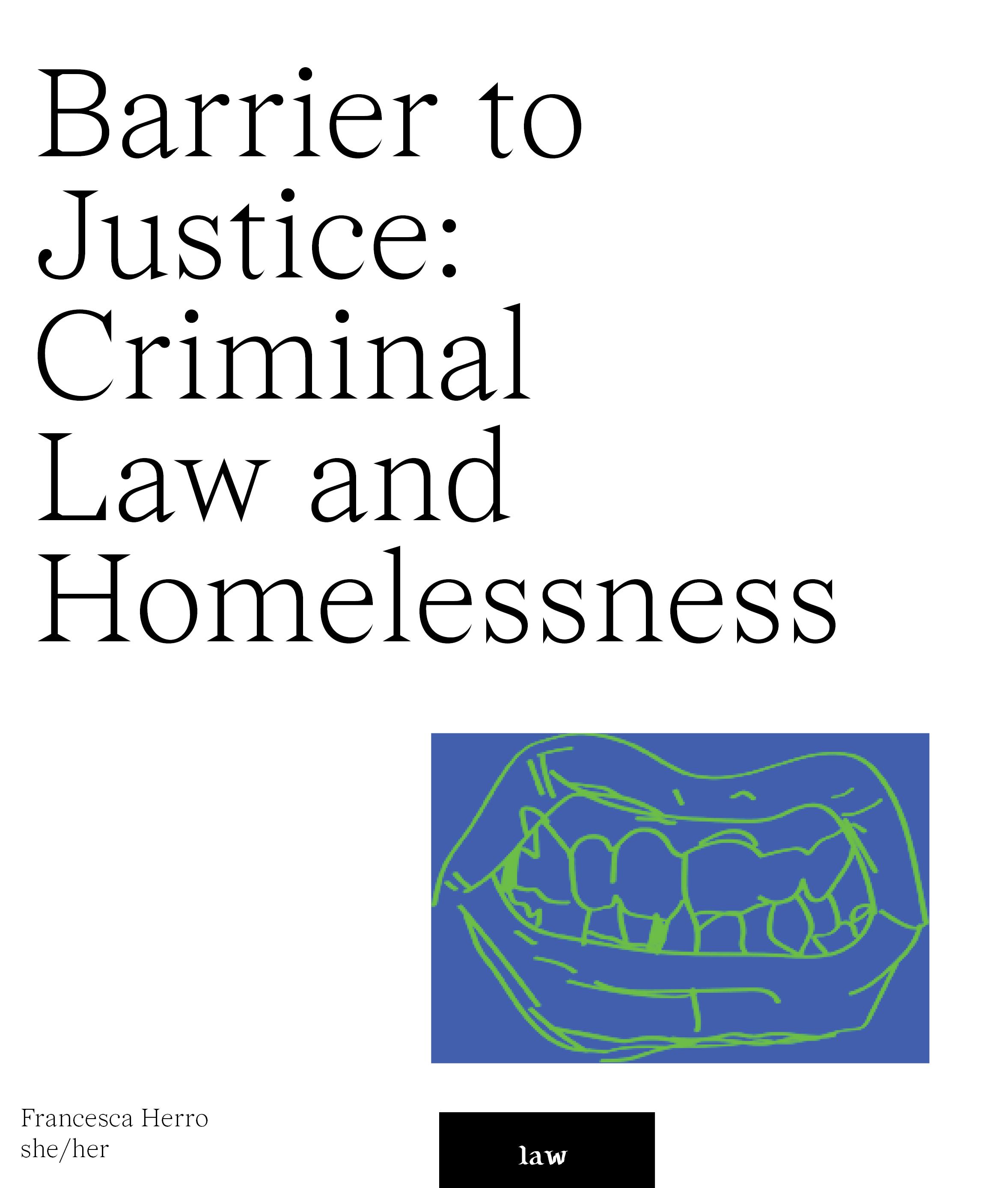














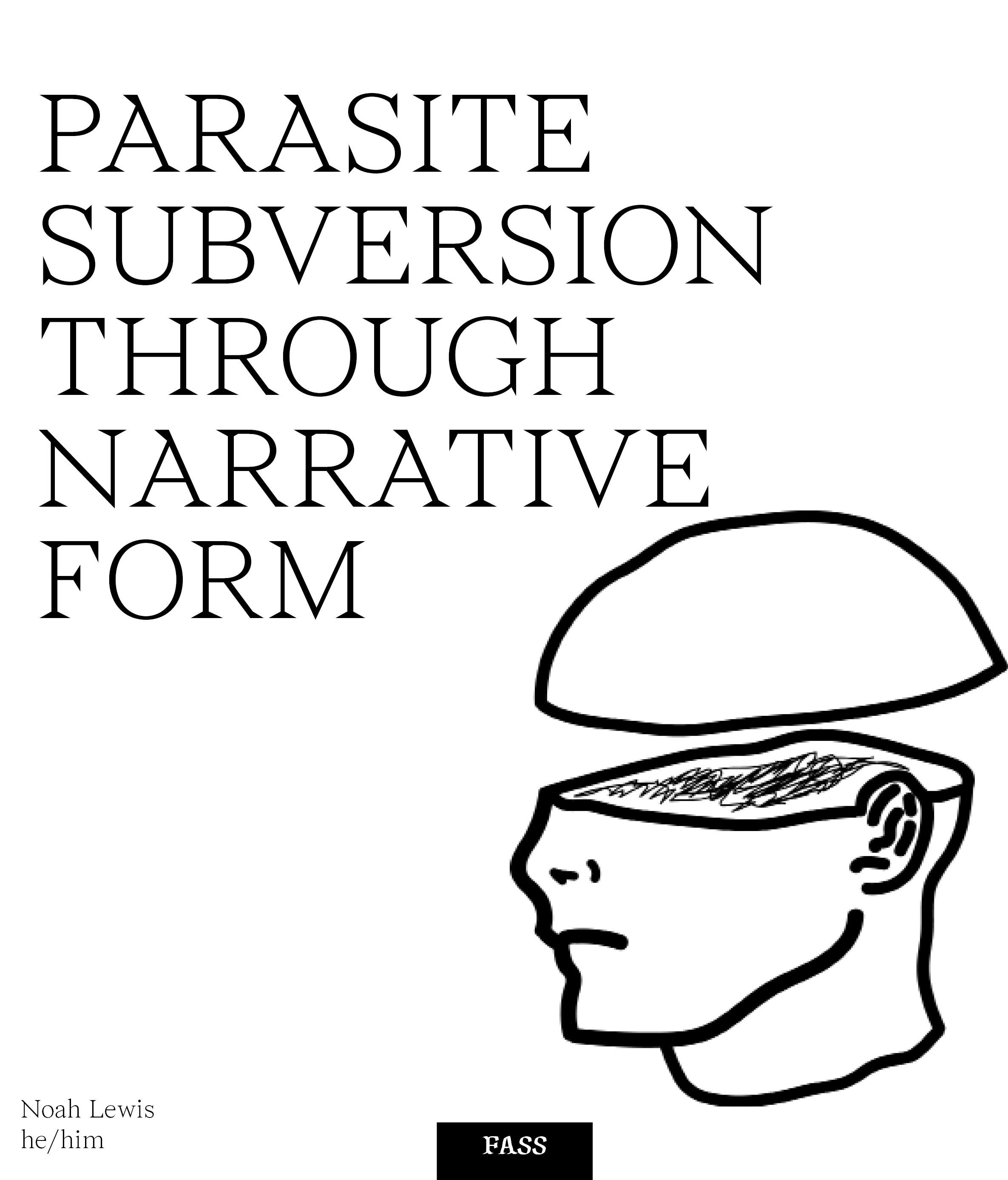









When you asked me to watch your bag for a few moments,
I agreed because good people watch the bags of strangers. But the odd part of your request is that you said bag and not baby.
I didn’t assume the baby was yours because I’m not judgemental, nor did I assume it was fatherless for the same reasons. I called the baby Ruby when referring to it in conversation because the bag said so. It’s a quiet baby. You’re so lucky, I thought, because that’s what people think about quiet babies.
I inspected Ruby further; I wanted to know more. Every now and again, it’d look back at me, but I never broke eye contact. I like to win. I brought Ruby out of its bag and onto my knee; the view is better from that angle. But it started to bubble at the mouth and scream.
So back in the bag Ruby went, furled into a blanket. The baby wasn’t mine, and I didn’t want the attention of onlookers thinking I couldn’t parent if I couldn’t stop the screaming. Because I think I could. A dentist told me that once. It was a record-long root canal.
Then I left with the bag and its contents. I am not a thief, the bag just suited my outfit far better than the stranger who had owned it before me.

Hamish is a fishmonger.
Every day, Hamish catches the bus from the suburbs to the bay, and then from the bay to the suburbs. On some mornings, when Hamish leaves his nets at home by the front door while kissing his wife goodbye, it’s from the suburbs to the bay and back, and then from the suburbs to the bay again. The bus driver is familiar with Hamish, and they have a regular greeting; the nod. From time to time, words are even exchanged.
Some people have lost their shit.
When we passed each other in the frozen foods section of the supermarket, my shopping trolley did scrape up against your shopping trolley, I’ll admit it. I hadn’t realized you had leapt over to shove me up against the supermarket fridge until I was shoved up against the supermarket fridge. A retaliation to the scrape, I supposed.
And only with my face pressed up against the fridge door glass did I realize that the price of peas had risen in the past week. Some people have lost their shit.
But when Hamish forgot his bus pass and frisked his pockets while excusing that his wife must’ve taken it that morning, the bus driver urged that “something fishy was going on.” Hamish didn’t laugh or even smile. And he didn’t return that evening for the trip from the bay back to the suburbs for supper. Hamish now catches the train in retaliation. Hamish calls it a protest.
I was disloyal to my Cosmo (the gas station attendant). He caught me and my contraband chips walking past his gas station some evening last week. I threw a wave. He didn’t return it. I took this hard and I don’t take things hard. Ever. But I had grown fond of our ritualized relationship. I buy, and he sells, and we gab a little. Usually, it was the minutiae of the day or the niceties of casual conversation, like remarkingon the gas prices that week and Cosmo telling me to take care of myself. Perhaps he had thought I’d let myself go. Now I find that I’m scared to face my Cosmo at his gas station. I don’t do confrontations. And I was disloyal.
I have let myself go.
Alice was an accident. When people ask about it, we reassure them that it was a happy one.
Like when you trip and fall into a gutter, but while you’re down there you find the missing handle of your new armoire (which was a steal) which must have fallen off when you carried it over that very same gutter on your way home the week prior. Or like when the waiter gives your vegan step-aunt cow’s milk in her cappuccino, but when you go to the counter to replace it, the hostess announces that you are the hundredth customer that ordered from the cafe that day, and gives you a sack full of jelly beans (vegan ones) as a reward. Or, it’s sort of like when you finally submit to the fact that it’s time for you to repent, but the very moment you go to confess, your guardian angel comes down to gift you eternal life for your good deeds.

Any way you spin it, we welcomed Alice warmly. We parented her well. She died at a younger age than usual due to her early onset dementia, which caused her to forget to take a breath before putting her head under the water during bath time. The death hit us hard.
We never knew we wanted rabbits till we tripped over one on our doorstep. This house welcomes happy accidents. Alice won’t be the last of them.
She had written this on a note that she had stuck on the fridge door. It’s a sort of ritual that happens whenever she picks up the booze again. I’ve noticed. Someone once told me that I should be upset about it, but I’m never all that bothered. I like the time to myself.
My bed’s unmade, and she can’t yell at me for it, because she isn’t here to yell at me for it.
I will jump on it. It will get messier. I’ll rummage through the duvet and the blankets and sheets. It will get messier. I’ll chuck the pillows on and off, and on and off. And it will get messier. Then I’ll get bored and ready the bed for sleeping.
Later in the night, she’ll roll into my bed, and push herself right up beside me, at an hour I’ve noticed that other people would call unreasonable.
She got bored of her planes too.

Sullenface gets a haircut at our salon every six months or so. She goes here because her mum goes here and her mum’s mum too (but the tradition ends there, the shop isn’t that old). A good haircut is hard to come by. That’s not our slogan, but it is mine.
Sullenface went for a fringe this time.

Tough. Real tough. It’s a tricky cut, and the rubble of cry on her face made it known that she wasn’t a fan of the new do. She’s good. Real good. Our policy is that if you hate it, you don’t pay. Not many people abuse it, but Sullenface is cheap. Cheap enough to take a lollipop from the jar when leaving the appointment, free haircut and all.

The mum with the two girls (and sometimes the young young boy in the stroller) came into the shop today. This time, the mum was followed by the two girls only. One of the girls had a witch hat on and walked around casting spells on all the racks of clothes to change their colour. The clothes change colour. Every time. Without a doubt. The other girl was silent throughout, maybe mute. The mum promised them both ice cream afterwards, “if they were both quiet”, but this was really just directed at the witch. They (the ‘they’ in question is again just at the witch) were quieter after that. The mum knows her kids well and knows how to bribe them. Obviously.
The mum rifled through the rack of tunics. We had yellow ones and pink ones (everyone says we should stock green, but we don’t). “Mum likes yellow”, the witch told me. She was adamant. The other girl said the opposite; “Mum likes pink.” Not a mute. They went back and forth, and back and forth at this. I asked the mum her opinion, but she was blank-faced, like she didn’t understand the question. The witch told me that she had already told me that it was yellow that Mum liked.
I retreated from the clothing rack and went to the cash register with one yellow and one pink tunic to check out. I wrapped them both up in a bag but charged her only for one. Tunics are an all-week garment, so she’d get good use out of them, I convinced myself.

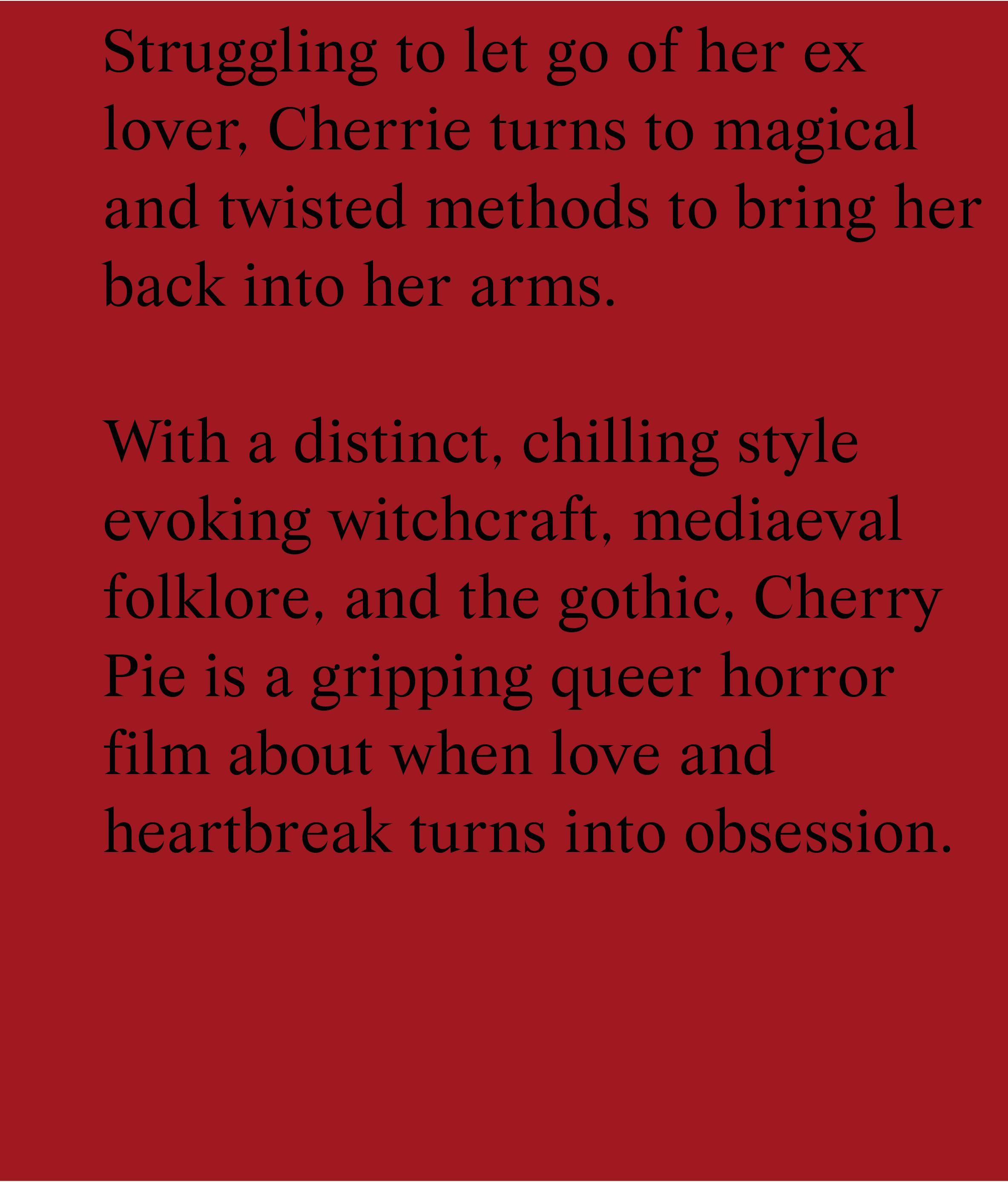








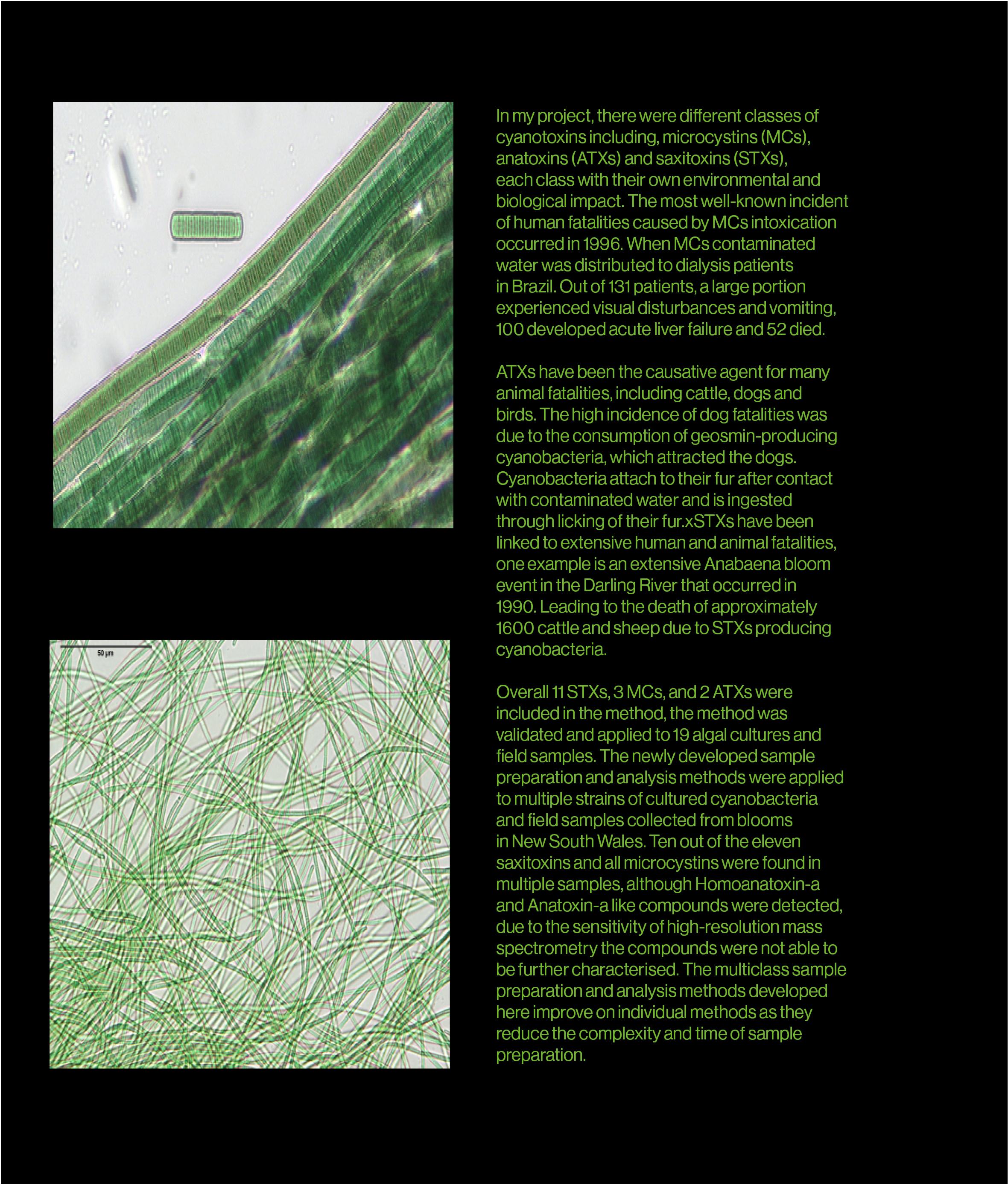





Tom Griffin is a 2023 UTS graduate from a Bachelor of Engineering (Honours) and a Bachelor of Creative Intelligence and Innovation. The following work extracts from Tom’s capstone research and literature review on Sustainability in Transport Infrastructure. For publishing purposes, this report shows only select parts of Tom’s 4,600 -word report. Therefore, it is important to note that significant portions of his research are not shown in the following.
The introduction of Rubber crumbs into existing railway ballast infrastructure has been tested by academics and engineers over the past few decades. In an attempt to increase the longevity of existing infrastructure, the inclusion of rubber crumbs is a way to support the growing freight and passenger transportation industry within Australia. The following research paper highlights the limitations existing in the ballast layer and the effects of cyclic loading through ballast box and triaxial testing. Additionally similar tests with rubber crumbs are discussed to consider percentage, sizing and sources when applying this technique. Brief discussion of sustainable building practices with end-of-life tires being repurposed is also mentioned as a source for the rubber crumb aggregate. The paper ensures the Australian Standards have been met for material selection and properties within the ballast layer, and how the inclusion of rubber crumbs at certain sizing and percentages, allows the ballast to perform at a higher and more accepted rate, while complying with the standards set by Standards Australia.
M. Sol-Sánchez et al, 2014 reveals insights to the degradation of the ballast layer in its current form, and that without improvement from a few key structural elements, financial strain will increase with continuous maintenance due to ballast fouling, track settlement and reduced permeability with increased crushed particles.
D Bassey, 2021 highlights the leading degradation contributors which are further highlighted in similar
studies. The research reveals, contaminants within voids of the ballast under loading contributes to fouling and reiterates fragmentation of ballast materials. This increased fouling material (particles < 12mm) due to heaving cyclic loading caused by fragmentation and edge abrasion sees consistent deterioration of ballast layers. When enough smaller particles continue to fill the needed void areas, this is considered ballast fouling. An increase of the speed of trains has shown to be one of the most influential factors contributing to track settlement across the board of academics attempting to better understand the ballast behavior. Within a finite-element analysis by Luo et al, 1995, three distant speed a=variations show to categorize the ballast settlement. Low speeds below 180 km/h showed insignificant displacement, intermediate speeds ranging 180 km/h to 300 km/h showed noticeably more displacement, and high speed trains ( > 300 km/h) revealed much larger contributions to ballast track settlement (Indraratna, 2014).
In the search to increase longevity and stability within the railway ballast, introducing both sustainable and recycled material has seen further attention in recent studies and testings. The inclusion of recycling end of life rubber tires has been adapted in recent years to offer strengthened damping abilities and track stability. Multiple Australian and overseas studies have included simulated testings and analysis of rubber chip included ballasts. These studies revealing appropriate ballast material within a ballast box set up shows the inclusion of rubber crumbs (RC) at an optimal percentage proved positive results under high levels of stress and strain. Percentages of RC including 5%, 10%, 20% and 30% have been discussed in multiple papers, and results from M. Sol Sánchez, (2015) revealed percentages of 30% of RC filled almost all void areas within the ballast, which would show drainage and permeability to decrease below that national standards. This study also revealed RC percentages of 5 and 10% would result in less ballast settlements and vertical displacement compared to regular ballast set ups within the ballast box. This study also states that after simulations have been conducted the percentage of smaller and fine particles decreased with additions of 5 to 10% of RC added. In a comparative study by Zhu et al, (2021) an optimal percentage of tire-derived aggregate
(TDA) is discussed at 10%, which reduced particle breakage by 47% in a discrete element model analysis. Similarly to the study previously discussed, the stress and energy impact can show increased handling with optimal TDA inclusions, however it is noted by Zhu et al, that an evenly distributed TDA throughout the ballast is required.
Wu et al in 2021 revealed that once selecting a material (in this case, granite), the tire-derived aggregate or RC is selected in appropriation to the nominal size range of the ballast material and local standards. Similarly, uniformly crushed graded dolomite is shown to maintain the national standards required. Using existing ballast material in order to research the effects of adding foreign rubber material has been widely adopted, and in 2016, Fathali et al used crushed graded dolomite and mechanically shredded rubber crumbs. This process of introducing TDA included mechanically shredding in multiple steps from a recycled rubber company. The addition of TDA has no effect on the current standards and properties of existing dolomite, when added uWniformly and in specific percentages compared to existing aggregate. This inclusion has further been successfully attempted by M. Sol-Sánchez et al, 2015 using granite material. Guo et al, 2022 revealed varied sizes of RC inclusions with larger RC size following similar PSDs as appropriate ballast material. These methodologies of appropriate adaptation can be utilized when comparing TDA or RC to Australia Standards and materials that fall within these standards, to ensure appropriate guidelines and standards are met. It is clear that the inclusion of specific sized RC, adding uniformly and at correct percentages have little to no effect on the existing aggregate to remain consistent with the national standards. Discussions of utilizing rubber crumbs within locally sourced (Bombo Quarry, NSW) latite basalt material mechanically examined by Indraratna et al (1998) has been researched by Arachchiage et al (2022) paper and leaves with recommendations of implementations for NSW specific railways within the Australian Standards.
Tom Griffin is studying a Bachelor of Engineering (Honours) and a Bachelor of Creative Intelligence and Innovation









Dean Ockenden is in his final year at UTS, and is studying a Bachelor of Mechatronic Engineering (Honours) and a Bachelor of Arts in International Studies. The following are collated extracts from the research proposal for his capstone thesis on Automated Holistic Aircraft Visual Inspection. It is important to note that for publishing purposes, this paper consists of select sections of Dean’s 7000-word proposal.
A review of aircraft visual inspection techniques shows that automated techniques could greatly benefit the aerospace industry. A promising avenue explored is image processing techniques on aircraft image data. These methods include machine learning (ML) and deep convolutional neural networks (DCNNs). The use of two state-of-the-art (SOTA) DCNN model architectures that excel in defect detection has been examined in detail. The proposed solution involves using drones and stationary photography of aircraft with DCNNs to create an automated holistic aircraft visual inspection (AHAVI) system. Expected results indicate that the YOLO-NAS DCNN architecture may best suit real-time defect detection. DCNN architectures generated using the clonal selection algorithm (CSA) may be most promising for a system prioritising recall and precision over speed.
The proposed AHAVI system is outlined; however, the research is limited to developing the DCNN model architectures.

Fault detection is of paramount importance. As industries increasingly push towards taking full advantage of automation and transition to Industry 5.0 (Barata & Kayser, 2023), current fault detection techniques need to be refreshed. Possible loss of life (E.g., the 1986 Challenger explosion) makes fault detection especially important within aerospace. To achieve safer travel, fewer delays and lower maintenance costs, fault detection should be validated by accurate and reliable automated technology in collaboration with subject matter experts (SMEs).
Fault inspection schemes are in place within the aerospace industry; however, they are not without limitations. In 2014, damage occurred to an ATR 72-600 horizontal stabiliser; the fault went undetected during an inspection and was finally identified 13 flights later (Aerossurance, 2019). Similarly, it has been confirmed that the loss of China Airlines Flight 611 in 2002 was due to fuselage cracks that went unnoticed. The fault caused Flight 611 to break apart mid-flight (Aviation Safety Council, 2002). Current inspection processes are labour-intensive, expensive and error-prone. Inspection reliability depends on human inspector expertise, inspection conditions and inspector fatigue (Marais & Robichaud, 2012).
Two research questions are covered in this research. Question one asks if automated visual inspection techniques can deliver the recall and precision required to replace manual processes. Question two examines if a complete aircraft visual inspection can be devised that mitigates the limitations of manual processes.
Convolutional Neural Networks (CNNs) excel in extracting feature maps that can be used for pattern and object recognition. In conjunction with aerospace robotics such as drones, DCNNs can form a key part of automated aircraft visual inspection.
Using the Preferred Reporting Items for Systematic Reviews and Meta-Analyses (PRISMA) methodology, this review investigates the topic of automated aircraft fault detection. The inclusion criteria were:
(i) publication date from 2014 through 2023;
(ii) being an empirical study, master thesis, or project report;
(iii) written in English; (iv) published in a scholarly peer-reviewed journal or conference proceedings; and (v) assessed “fault detection”, “visual inspection” and “object detection”. The search topics included “fault detection”, “image classification methods”, “convolutional neural networks”, and “automated object detection”. Ultimately, 22 articles across three databases, lens.org, Google Scholar and search.lib.uts, were selected for review in this work. Defect detection techniques rely heavily on visual inspection. A human reliability analysis of visual inspection by Chen and Huang (2014) found that the five factors contributing most to the efficacy of this technique are visual information, fatigue, equipment, detection distance, and job training. Furthermore, the effectiveness of visual inspection is more related to factors involving the inspector rather than what is being inspected (Chen & Huang, 2014). Although outdated, work by Drury & Fox (1975) measures inspection error rates between 20% to 30%, aligning with a 1997 experiment by Drury et al., which examined the effectiveness of 12 professional aircraft inspectors in identifying defects on a Boeing-737 where 68% were detected. More recent research by See (2015) found that visual inspectors incorrectly
rejected 35% of acceptable precision-manufactured parts. See (2015) indicates an unacceptable level of error in visual inspection, resulting in catastrophe or unnecessary maintenance. The Federal Aviation Authority (FAA) records conclude that inspection and maintenance errors are within the top three causes of aircraft accidents. Furthermore, accidents that are a result of maintenance are 6.5 times more fatal and result in 3.6 times more fatalities (Marais & Robichaud, 2012). Due to the notable limitations inherent in visual inspection for faults and defects, automating this process has recently garnered significant interest.
“...accidents that are a result of maintenance are 6.5 times more fatal and result in 3.6 times more fatalities...”
The YOLO CNN architecture, first presented in 2015, has proven to be a promising candidate for addressing the need for real-time defect detection due to its low computational complexity and high speed of computing. Variations of this architecture have inspired works related to automated defect detection in aerospace (Li et al., 2019; Qu et al., 2023). Mask R-CNN is another architecture that has gained attention for defect detection (Doğru et al., 2020; Ding et al., 2022) and can apply instance segmentation. Despite this, Mark R-CNN is far more resource-intensive than YOLO-based architectures and cannot be processed quickly enough for real-time use cases on mobile robotics. Faster R-CNN could be an alternative with similar capabilities (Aleksandr G., 2022).
The YOLO architecture has proven itself to be effective for drone applications (Li et al., 2019; Jung & Choi, 2022; Li et al., 2023). Finally, Deci (2023) built upon prior YOLO architectures with YOLO-NAS, a YOLO-based DCNN architecture with ‘neural architecture search’ capability. Deci’s model demonstrates improved mAP scores compared to other YOLO-basedmodels while further reducing latency (Deci, 2023).
In summary, a state-of-the-art (SOTA) YOLO-based architecture deployed on drones could be an effective solution for real-time defect detection.
In a 2017 work, Malekzadeh et al. proposed an aircraft defect detection deep learning model trained using high-resolution 20-megapixel images. Their model is based on the VGG-F architecture to produce feature maps, which are classified using a linear support vector machine (SVM), achieving greater than 96% accuracy. A number of works find that the performance of many SOTA DCNN architectures is highly dependent upon the dataset (Bressem et al., 2020; Yang et al., 2021; Zhao et al., 2022); however, work by Al Bataineh et al., (2023) proposes the clonal selection algorithm (CSA) with NAS that can automatically generate an optimised DCNN architecture for each specific use case. An implementation of Al Bataineh’s CSA significantly outperforms other SOTA DCNN models on the EMNIST dataset. DCNN architectures generated by the CSA may be well-suited to a model prioritising high-precision defect detection.

Dean’s proposed AHAVI system aims to satisfy the lack of consideration for complete inspectionsystems which was identified as a research gap by a 2022 systematic review of aircraft visual inspection techniques.
In conclusion, the transition from manual to automated aircraft inspection techniques is underway. A systematic review of aircraft visual inspection performed by Yasuda et al. (2022) has identified four shortcomings present in the current literature:
1. Poor specification of requirements for inspection systems
2. Poor testing and validation of automated solutions
3. Lack of consideration for complete inspection systems in the literature
4. Regulations and acceptance by the aviation industry
There is a clear indication of certain promising solutions, especially if synthesised. These technologies include droned-based visual inspection utilising DCNNs with a YOLO-based architecture for real-time defect detection. The CSA also represents a SOTA solution to developing DCNN architectures that excel in terms of recall and precision. In summary, the literature suggests that an intelligent drone-based aircraft inspection system can lead to more accurate, reliable, time and cost-efficient validation of aircraft conditions that negates the limitations of current manual processes.
We consider the goal of having an aircraft arriving at an airport gate post-flight, which needs to be inspected prior to its next flight to ensure flight readiness. Similarly, defects should be recognised immediately after the flight that caused the defect to occur to prevent the defect from worsening, the endangerment of passengers and crew or mission failure. The inspection process should not interfere with current flight scheduling, and ideally, non-destructive testing (NDT) should be employed. The accuracy and reliability of the system should match or surpass current visual inspection techniques performed by human inspectors. The solution should be sufficiently robust to function in all environments where aircraft are stationed and needs to account for challenging weather conditions such as extreme hot or cold, wind, visual occlusion and movement, which may be present on an aircraft carrier. Ideally, data gained from the system should allow the proposed solution to be built upon and optimised without a complete overhaul.
The research proposes two questions to be addressed.
This solution addresses the “lack of consideration for complete inspection systems” identified by Yasuda et al. (2022).

6.2.1 Data Acquisition Network (DAN)
To inspect aircraft for defects that may have occurred during a previous flight, it is essential to have a system that can identify defects in real-time so they can be actioned prior to the next flight. However, this prevents limitations as the current CNN models that can operate on mobile robotics, such as drones commonly referred to as MobileNets, do not exhibit the same accuracy and precision as models that require longer inference time and greater computational resources. The proposed DAN consists of two parts:
1. UAV’s scanning the outer and upper aircraft frame
2. Stationary cameras inspecting the aircraft’s underbelly and landing gear
Image data from the DAN will be run through a CNN model for low-latency defect detection in real-time (DDRT), which will be streamed to a central data analysis and sharing hub (DASH).
In the DASH, feeds from the DAN will be analysed by SMEs to identify defects that aren’t automatically recognised by the system and determine whether any identified defects are worthy of human inspection.

The same image data from the DAN will then be run through a model that prioritises recall and precision over latency for defect detection post-hoc (DDPH). This system will require far greater computational resources, which makes it unsuitable to be used for real-time detection. In future, once a sufficiently large dataset has been constructed and labelled by SMEs, the DDPH system should be able to predict whether a defect requires action or can be temporarily disregarded. Images of the defects detected by the DDRT can also be prioritised to run through the DDPH to prevent false positives.
Finally, the image data gathered from the scans will be labelled and uploaded to a cloud database that can be accessed by airports internationally to continually improve the performance of their defect detection models. Following an air accident, images of the plane in question can be analysed for signs of defects that went unidentified by both the automated system and SMEs. These images can be re-labelled to further improve the model.
The beauty of the AHAVI system is that every aircraft inspection improves the model’s performance in the future as the dataset continues to expand. Human inspectors and SMEs are kept in the loop but can use their limited concentration to focus on key problem areas that are identified by the automated system. Furthermore, airports worldwide can benefit from inspections performed elsewhere, allowing small airports to gain the big data advantage of large international airports, which cater to hundreds of thousands of flights every year.
“The beauty of the AHAVI system is thataircraftevery inspection improves the model’s performance in the future as the dataset continues to expand”


Soles Interlaced. This portfolio is a curated exhibition space at Sydney's Carriageworks, which showcases artefacts from the Powerhouse Museum. By showcasing the Joseph Box Shoe Collection, my designs attempt to harness spatial organisation in a way that subverts mundane objects such as shoes, into a focal point of human connectivity. My work was influenced by the period that each shoe was from, the particularity of their craftsmanship and the heritage and biome behind each shoe remnant.


As an architect, I often find myself drawn to gateways. I encourage the use of transitional spaces, as I am intrigued by how they force us to reflect on our present-day selves by prompting an indulgence into the life of another. In physical spaces, this concept of liminalities is most evident in thresholds, where a portal brings together two entities or spaces by rendering them as one. This concept repeatedly appears within my work, and I plan to explore this in designs to come.




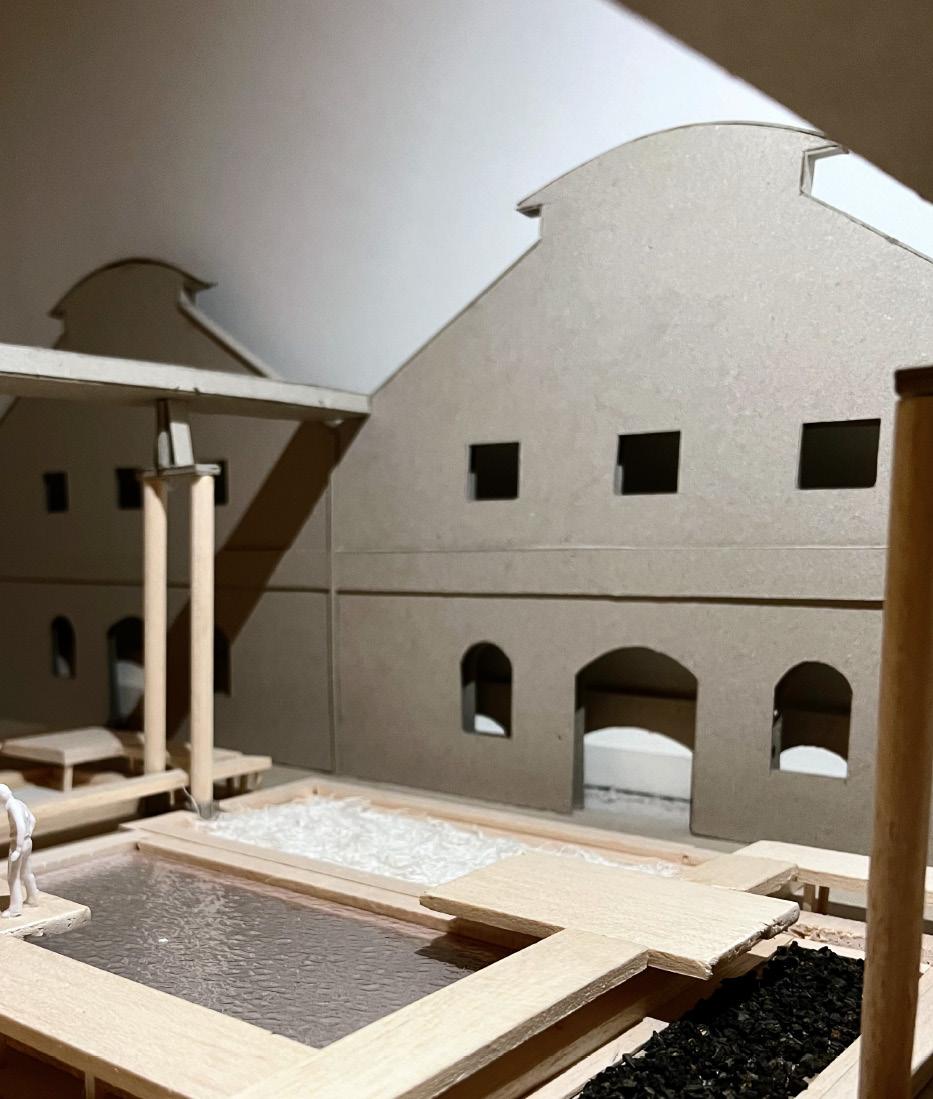
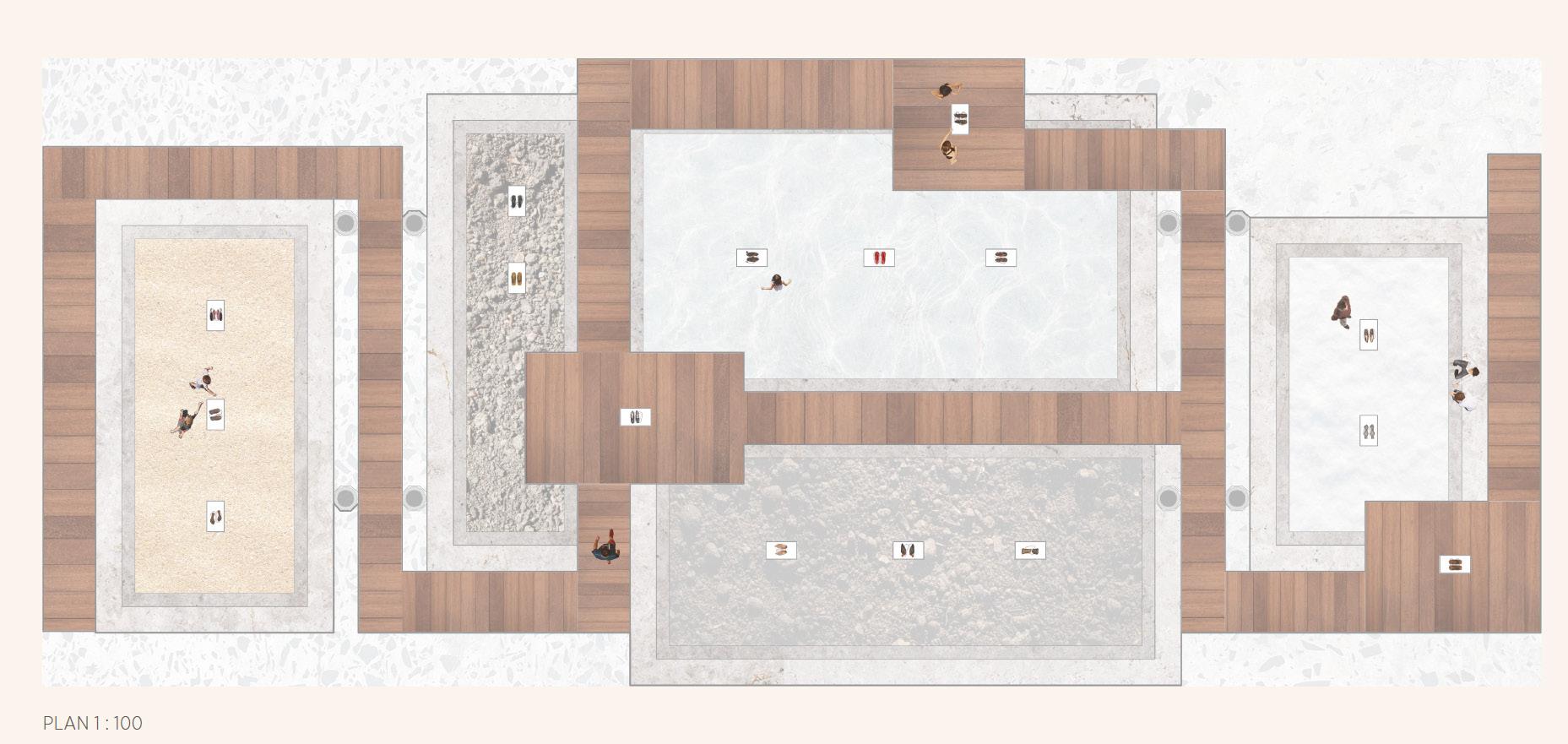






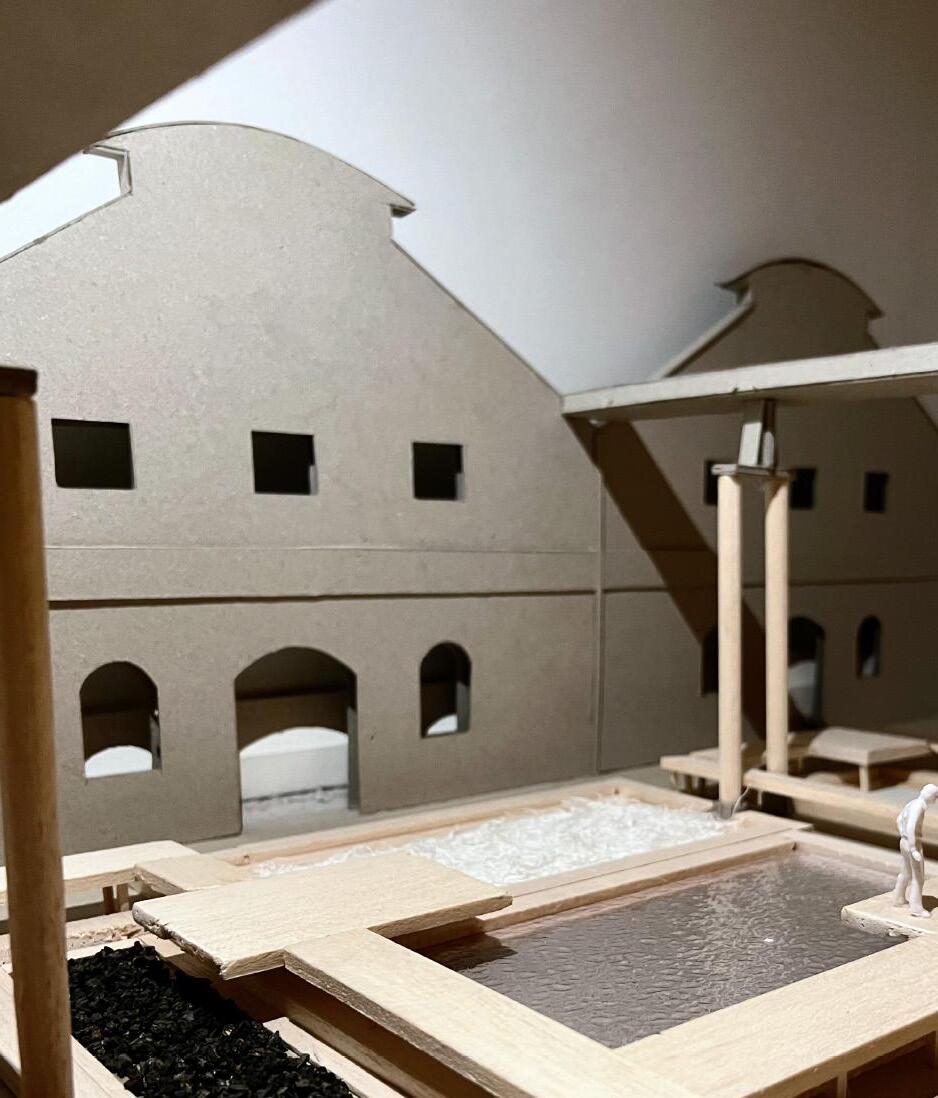




The following are excerpts from my body of work ‘Harwood Community Centre’. This project proposal aims to emphasise the role of buildings as social communicators and cultural hearts, and how they work to foster more continuous and cohesive urban scenarios. Harwood Community Centre is designed as an extension of the Goods Lane, Powerhouse Museum and the University of Technology Sydney.

This democratic and inclusive space encourages encounters and interactions among people, providing services like a general practitioner and legal aid, alongside public and private areas for work, study and play. It includes a community garden and ample restrooms, emphasising wellbeing for both adults and children.
”...architecture is a tool through which community cohesion and interaction is achieved...”



I am an Estonian-born Australian architect, working from a fine arts background. Having grown up in a very small community, I often find my designs attempt to construct space in a way that fosters interactions between individuals. Within my work, this is often achieved by rendering the space in a functional, accessible and cohesive fashion with careful consideration to the influence and heritage of the natural environment. I strongly believe that architecture is a tool through which community cohesion and interaction is achieved, and this is something that is emulated within my designs.







Social platforms and dating apps play a large part in the modern LGBTQ+ experience. They're spaces where we queer and trans people can interact with friends, express ourselves, meet new people and connect to the community. For many, these online spaces provide a space where we can learn about being LGBTQ+, find supportive peers or express ourselves when it wouldn't be safe or comfortable to do so in the physical realm. Despite the many benefits of social platforms to the queer and trans community, I don't need to tell you that they also have plenty of negatives.


 Figure
Figure
As part of my PhD, I'm exploring the ways that queer young men use social platforms, and how their design could be more supportive of their experiences.
In the initial stage of my research, I interviewed 24 queer young men in Sydney. I also gave them a kit of activities (known as probes in my discipline, Human-Computer Interaction) which helped them reflect on their use of the platforms in creative ways. Following this, I ran co-design workshops with technology designers in San Francisco to translate my findings into new concepts for social platform features. Based on these concepts, I created a number of mockups which I'm now presenting back to queer young men in Sydney. The aim for the research is to better understand the ways that social platform design can better support positive experiences for

 Figure 1: As part of one of the activities, participants creaded Honest Platform Ads that explore how they feel about different platforms.
Figure 2: The probe kit given to participants with instructions, five different activites and stationary.
Figure 2
Figure 1: As part of one of the activities, participants creaded Honest Platform Ads that explore how they feel about different platforms.
Figure 2: The probe kit given to participants with instructions, five different activites and stationary.
Figure 2






she/her
Eloise Chang-Hunter @weez.wip


Amelia wears the shirt and skirt
Joe wears the coat and dress




Chimera explores the contrast of grotesque and beautiful, rigid and organic forms.
Chimera emulates metamorphosis and hybridity in nature and mythology,
Through drape and manipulation, unique silhouettes take place. inspired by the life cycle of a butterfly and the Greek myth of the Chimera.

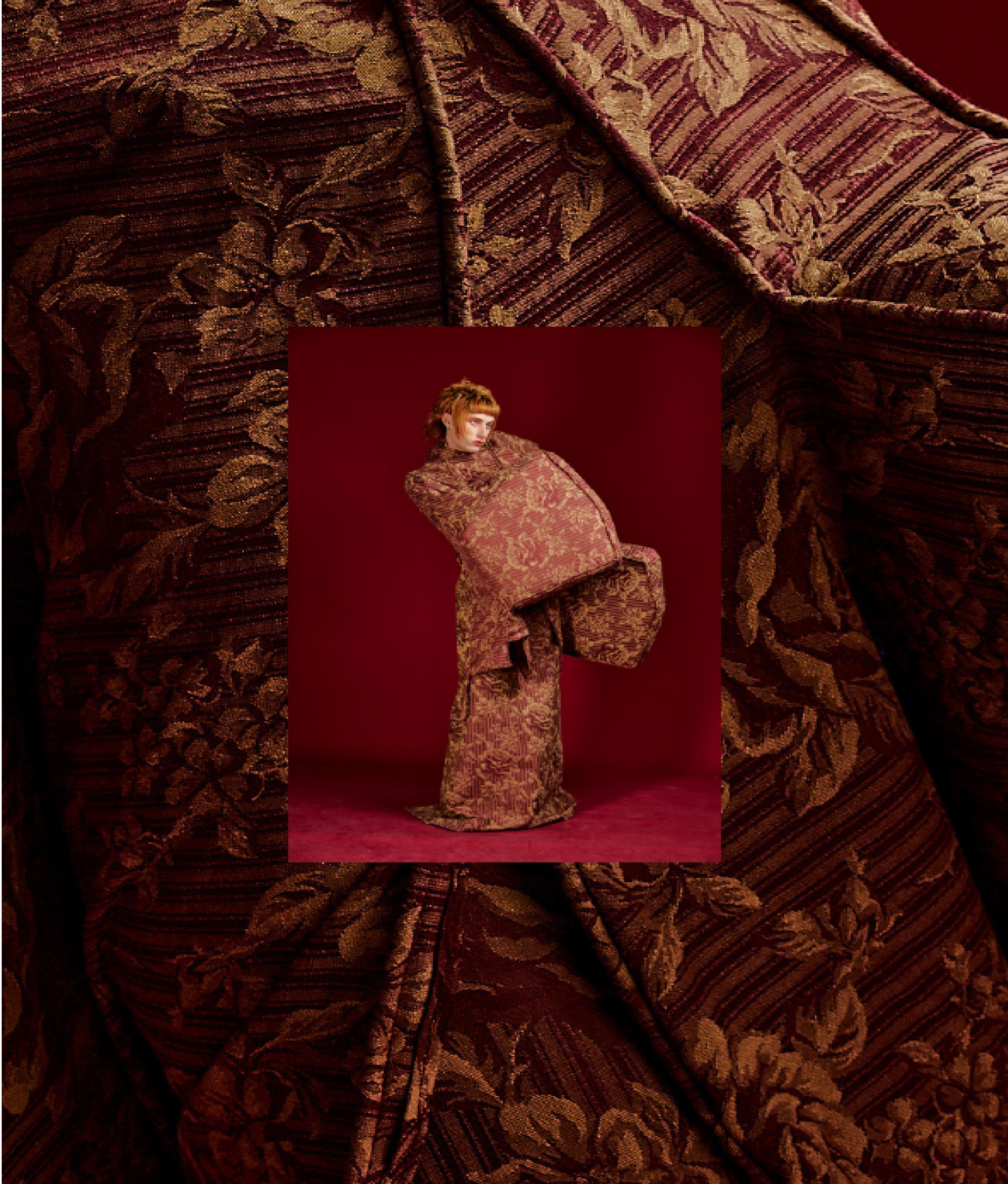



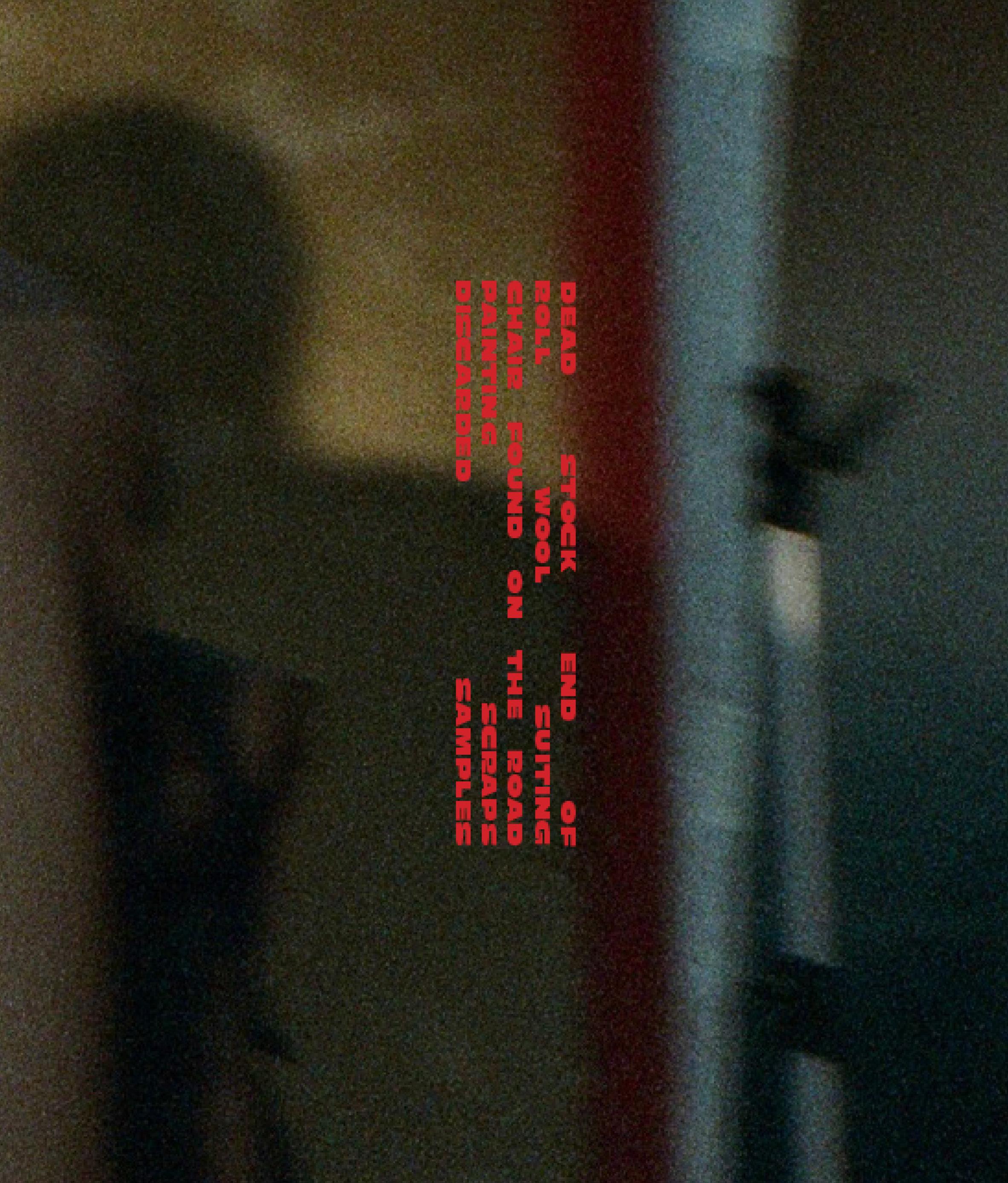




The start to the year, and Autumn Semester, has been massive for the Students’ Association. Here is a short list of some of the highlights so far:
In collaboration with Usyd SRC and SUPRA, were pushing for vital transport concessions forinternational and part-time students. An article detailing our campaign focus is now live on our website, featuring contributions from Raghav and Laura. The petition needs 20,000 signatures by the 7 th of March to be scheduled for debate in parliament – hopefully by the time Vertigo is published this goal will have been met!
Following a comprehensive review, UTS is adopting a more coordinated approach to sexual harm reports, a change that the UTSSA has long advocated for. This marks a significant step forward in our campaign for a safer campus environment, and will hopefully see a system like that at LaTrobe University and Monash University established at UTS..
I will be tabling a paper at the Student/Council Liaison Group to bring UTS management’s attention to its responsibility to comply with its own policies and the 2027 Strategy in relation to ethical partnerships and philanthropic donors. This is the first step in what I expect will be somewhat of an uphill battle with management, however as this is a focus that Councillors on the UTSSA and members of the student community have consistently raised with me, I think it is more than worth the effort. Depending on how the paper is received, I will continuously be reassessing our strategy in relation to this issue.
Another goal of the year is the introduction of simple extensions across faculties, and to streamline the processes and policies relating to extensions and special considerations throughout the university. I will be working on this goal with Alisa, and bringing forward our submissions to the first Academic Board meeting for the year later this month.
In solidarity with UTS Staff for Palestine, the UTSSA is engaging in actions demanding university support for Palestine. Last week, this included attending the public forum and the student strike. The UTSSA will continue to work alongside various UTS stakeholders to advocate for a ceasefire in Palestine, and for UTS to support affected students in this period. I am also so honoured to be leading such an ambitious and determined group of students this year on SRC. The UTSSA’s Office Bearers and General Councillors have truly been putting in so much work, and the success of the Collectives during O’Week was a truetestament to this. Stay tuned for more updates as we continue to advocate for meaningful change acrosscampus and beyond. Diverse student support and participation are crucial to the UTSSA’s success.
Mia CampbellThroughout the past month much of my time has been occupied by the collation and editing of theUTSSA’s digitally integrated handbook. This year’s onlineintegrated Handbook was a significant change to the way in which the physically printed handbook was traditionally published and distributed to students, and being the first General Secretary to produce a handbook this way hadmany challenges which needed to be overcome. Despite this, with the contributions from every single one of our Collective Office Bearers and with design help from David and Max from Vertigo I am ultimately satisfied with the final product which was produced. Going forward I have certain priorities which I think the UTSSA should focus on, and will certainly be a focus on most motions. I want to oversee in future starting this semester.
(1)Reviving Collectives such as the environment collective which are currently have an unsatisfactory level of engagement with regular students. My main hope is that in future each and every collective will in-of-themselves provide a student voice that is otherwise not heard at regular council meetings, and act as a mechanism for democratising the UTSSA
(2)A consistent focus on the genocide in Palestine, and a concerted effort to enforce policies and campaigns which create tangible change within the very limited scope we as UTS can mitigate this genocide, such as encouraging boycotts on campus as the UTSSA, and looking into partnerships which our university shamefully still undertakes
(3)
Revitalising Vertigo compared to previous years with collaboration between councillors and editors as well as consistently publishing both physical and digital content throughout both major semesters, whilst also respecting the autonomy, creativity and perspectives of Vertigo as its own publication separate form the UTSSA.
Adam LevettO’Day Updates
1. Had a successful O’Day in terms of collective sign ups - 40 new sign ups
2. Engaged with new members who are very keen to be involved
3. With each sign up, members were able to choose from
- Scented Candles OR
- Goodie bags with lollies, chocolates + a bath bomb OR fidget toy OR
- Badges / Pins / Keychains
- Beyond Blue wristbands
4. Handed out pamphlets regarding UTS Accessibility Services along with Cards with our socials + email card + Movie Offer pamphlets
Administrative Updates: Addressing concerns from the previous year, I am trying to be proactive in responding to complaints about unresponsiveness. Following a meeting with Bilijana, plans are underway to organise a convenor-electing meeting. To enhance communication and engagement, the collective will transition to MailChimp for streamlined email management.
- Active participation in the DisCo Facebook group - Introduced myself and goals I have for this year
Upcoming Events/Initiatives:
Looking ahead, the Disability Collective plans to organise another Stall, emphasising collective sign-ups and engagement. I am also planning the first event in The Activist Space, a Paint & Tea afternoon. Second event - Movie Screening featuring the documentary film “Defiant Lives.” I will work on finding an accessible room to ensure the event is accessible.
Goals:
The Disability Collective has identified key goals for the upcoming months. One primary objective is to advocate for virtual learning options in faculties where face-to-face interaction is not essential. This includes addressing the current lack of virtual learning alternatives in certain courses, such as FASS, where classes do not require physical presence. Also maintaining the “Ending Ableism” Campaign on Campus with the forum. To strengthen online presence, efforts will be made to recover the previous Instagram account or establish a new one entirely.
Samiha EmranOver the past two months, I have been working towards the Student’s Association’s transparency requirement. In practice, this has looked like pioneering the following:
(1)President Summit social media recap:
- President Mia Campbell recorded a comprehensive overview of the National Union of Students President Summit, held over two days at RMIT University in Melbourne. The event invites student leaders across the country to collaborate on campaigns that relate to student issues and provides training for incoming student office bearers to best assist in preparing for their terms. The recap summarised the content covered in the various training sessions and what will be actioned following the conference. The digital response from the posts on both Instagram and Facebook stories was positive.
(2) ‘Get to know your Students Association’ social media series:
- To ensure that UTS students are familiar with the leadership team of 2024 and feel comfortable reaching out, I believe putting a face to a name is the best approach! Each week, one member of the Student Council will film themselves at their favourite spoton campus answering 4 questions which will be uploaded to the Students Association social media pages.
See questions below:
(1)What’s your name, degree, year, and role on the UTSSA?
(2) Why are you passionate about advocating for students’ issues, paying particular attention to your role - e.g. “As Women’s Officer, I am passionate about equitable access to sanitary products on campus”.
(3) What’s your favourite spot-on campus? - this could be a food outlet, or a particular building etc.
(4)How can students get in touch with you?
(This is where you direct them to the UTSSA website and quote your EXECUTIVE / OFFICE BEARER email address, NOT your personal email.
Bridie O’KellyIt has currently been an exciting start to the year, meeting lots of postgrad students at our UTSSA stall and it was great chatting with them regarding the different services and support that we offer.
Some future events and initiatives of this year include:
- currently collaborating with the HDR (higher degree research committee)and sitting in their monthly meetings, potentially hosting mentorship programs for postgrad students
- gauging ideas on how to approach newsletters and talent showcase for research and masters students who have major projects and placements
- organising professional development events such as academic writing workshops and networking events. Will talk to postdoctoral association to collaborate regarding workshops and lectures to be held by them this semester as a free event for postgrad students and open for all to attend. Events can also include excel skill workshop, statistical analysis, resume writing, etc. Expanding these ideas by collaborating with careerhub might be a new option too
- Creating mental health group for postgrads
- Potentially host networking events ran by postgrads to give them a platform and opportunity to share their story and achievements to inspire undergraduates.
- Envisioning some social events, collaborating with law, business, science societies etc.
Laurie CurrieAs the first semester of 2024 begins things at UTS have started to heat back up again. The orientation day stall for the welfare collective started off with a big bang as baked goods and cup-a-noodles were handed out to students that signed up to raise awareness for bluebird brekkie and night owl noodle. In doing so, the stall achieved great success by having many new students join the collective and become informed about our peer tutoring, counselling and legal services that the students association provides. From the welfare collectives perspective we feel as though we have been able to raise a great deal of awareness of the students association by being placed with activate in the well-being garden next to alumni green. Having received all this attention also meant that our supplies ran out in the first hour when catering for the line of new students. As such I had to make an additional purchase to account for all the new students that were interested in our stand. While this is just the start the of year we believe that the welfare collective has many interesting projects to come including a well-being walk for students to reduce the stigma around mental health whilst getting students involved and socialising with others. Ultimately, the start to the year couldn’t have been better for the welfare collective as we look forward to what more is to come.
Aylin CihanPast Events Summary:
We received many sigh ups during O’day thanks to both the visibility of the stall as well as support from Darlings ( LGBTQIA+ club), something that the collective will seek to continue during the rest of the year. As we are in the mist of Mardi Gras there are tons of activities hosted by activate throughout the weeks which includes the following:
Up Coming Events
28th Feb – Drag Bingo. A bingo match which will feature several drag queens at the underground
29th Feb – Queer Comedy Night. A comedy show hosted by Oxford Street’s biggest and longest comedy club, Kweens of Comedy. Hosted in The Loft this event will feature comedians AJ Lamarque, Jake Howie, Elsa Daddo, Brendan Hancock, Annabelle James, Nic Lombardi and Gen Fricker who will be headlining the show.
1st March- Wellbeing Reps: Random Acts of Kindness. The Wellbeing reps will be on the Alumni Green and Building 2 with pink shirts handing out items to students ranging from hydrating hydrolyte to soothing face masks. If you want to get involved express your interest on the activate website under “get involved”.
26th of Feb – 1st March - Workout with Pride. Our on-campus gym is giving out free gym classes during UTS Pride Week courtesy of ActiviateFit.Gym. To attend go to ActivateFit.Gym website for the class timetable and the gym in Building 4, Level 2 for your Pride workout. The best dressed member will score two-weeks free of their ActivateFit.Gym membership!
2nd March - UNKNOWN PLEASURES. House of Mince will be presenting UTS with a wide arrange of musical acts across three platforms Hosted at The Underground, The Loft and Tuner Lane. Tickets available via Moshtix.
Goals Still to Be
Achieved:
- Continuation of efforts to increase membership and participation within the collective.
- Host first meeting
- Increase Social Media Posting
Daewah TheinProgress on campaigns throughout the past month: In my introduction statement when elected, one of the main goals I highlighted was the standardisation of assessment policy and introduction of automatic extensions at UTS. In regards to this campaign, I have created a strategy plan and am currently implementing the first steps. This month I have been researching and compiling information about UTS’ current extension policies and how they operate. As each faculty runs quite differently and there are different reasons as to why their policy is constructed in the way it is, I plan to meet with staff representatives from each faculty to discuss policy and possible changes. Whilst this is happening I will continue to compile information for the purposes of submitting a proposal for automatic extensions and standardised policy at the Student/ Council Liaison Group in April and any other relevant boards for discussion. If this is unsuccessful, then I will enact a grassroots campaign.
I have been in contact with Grace Franco, NUS Education Officer, about this and other campaigns which are to be run by the Education Action Group at UTS. I plan to further consult with her about how we can be assisted in the execution of this campaign and other education related ventures at UTS.
Challenges encountered this month:
The biggest challenge that I have faced this month is definitely the status of the education collective itself. The Education Action Group is inactive, and as I was unable to run a stall at O’Week due to personal reasons, it has remained that way. There are two ways in which I intend to fix this issue, by running stalls during class time to gain interest, and by reaching out to collective members individually. I have already begun the latter, and hope to hold a meeting in the next month or so.
Upcoming Events:
In terms of upcoming events, we will have EAG stalls as mentioned previously to gain more interest in the collective.Additionally, I have been in contact with Respect Now Always regarding joint events. We are currently organising a postering session on campus to give students the opportunity to learnmore about what both RNA and EAG do, as well as meet like-minded people. I plan to workmore in-depth with RNA this year, especially in regards to further consent and respecteducation on campus.
Goals to still be actioned/achieved:
Maintaining social media presence, by revitalising the EAG social media as well aspromoting upcoming events on other social media pages.
Alisa HamiltonDuring my inaugural month as the Indigenous Students Officer, I had the honor of co-hosting the UTSStudents Invasion Day March at Belmore Park alongside Mia. This event marked a promising beginning to the year, uniting UTS students in support of significant causes while bolstering student solidarity. Furthermore, I had the privilege of acquainting myself with the incoming Indigenous cohort through an orientation information session at the University. During this session, I not only presented my role within thestudent association but also facilitated their integration into the University lifestyle. This interaction provided me with the opportunity to bridge connections between new students and those who have already established themselves within the UTS community, promoting a sense of belonging across generations of scholars. Additionally, hosting a stall for the First Nations Society during O’Day proved instrumental in engaging awareness for both the society and the student association. This outreach effort effectively extended the reach of my role, contributing to the broadcasting of information within the UTS community.
I’ve been quite successful in spreading the word about the collective through verbal communication. However, now that I’ve discovered the option to enlist sign-ups, I’ll make it a priority to encourage more people to join. I am eager to facilitate student engagement with the student association.
My main challenge has been time management. Balancing my responsibilities as a full-time construction manager, studying five subjects this semester, serving as president of the First Nations Society, and being involved in the Indigenous Students Collective has been demanding.
Goals to be Achieved and Events to be Held:
My goal is to hold community events which bring people together for a great cause. A few examples are listed below:
- Fun Run Fundraisers (City2Surf)
- Starting students’ clothes donating students old, unwanted clothes to communities
- Fundraisers for Cancer
- Holding a tour which informs students of Indigenous culture.
- Helping with the Blue Bird Pantry as it is such a great cause
- Attending rallies supporting causes with the students association
- Bring the Indigenous Collective and First Nations Society together for events
Jermaine Petterson-HeardMembership:
At orientation the women’s collection (woco) was fortunate to have approximately 115 new sign-ups. This means that in the last 12 months woco has had 364 sign ups which is incredible.
Past Events/ Initiatives Summary:
Throughout the month of February five significant events and initiatives were undertaken:
(1)Meetings with the organisation Respect Now Always (RNA), to initiate more collaboration between RNA and woco on future events and campaigns. In these meetings we discussed the national student ombudsmen consultation submission, respect week, possible future events, promotion of woco on campus and how to prevent sexual harm on campus.
(2) Meeting with the general sectary of Flinders University’s SRC to discuss the women’s collective and how to have more engagement with the collective.
(3)Attending two meeting with the organisation End Rape on Campus Australia. One regarding the Educations Ministers draft action plan addressing gender-based violence in higher education and the other regarding the 2024 university sexual assault report briefing.
(4) Writing a submission on behalf of UTS to give a consultation on Educations Ministers’ draft action- plan addressing gender-based violence.
(5)
Having two meetings with UTSoC and Jsoc in order to discuss our upcoming Women in Media panel.
Upcoming Events and Initiatives:
(1)Women in media panel:
An upcoming event, focusing on the pivotal role of women in the media industry. The objective is to empower and amplify the voices of women professionals. Detailed information on panellists and discussion topics will be communicated shortly to students through our media channels.
(2) International women’s day stall of baked goods:
In celebration of International Women's Day, a stall featuring an array of baked goods will be set up. This initiative not only supports local women entrepreneurs but also contributes to the commemoration of this significant day.
(3)An official women’s safe space opening will be held when the woco space is redecorated.
Goals Still to Be Achieved:
- Get the woco book club up and running
- Ongoing efforts to enhance the women's space are in progress.
- More promotion of our initiatives and achievements on social media platforms.
Mariam Yassine(1)Community Platform - In January, the International Collective started a WhatsApp Community to substitute the emailing service, as most international students don’t read email due to thenumber of emails they receive. Thus, to have a quick and easy way to inform about various events and meetings, We have implemented a WhatsApp community, and to date, we have 302 members in the group and the community; due to privacy reasons, the students won’t be able to see any students number nor anyone else can see their number.
(2)O’Day - In O’Day, our main focus was to promote the “Day Trip to Bundeena” and the WhatsApp community. We started the O’Day with 30 members in the group, and by the end of the two days, we had 240 members, an 800% growth during the O’Day.
(3)Bundeena Trip - On 24 and 25 February 2024, we organised a “Day Trip to Bundeena” with a capacity of 60 International Students in 2 days, and we successfully engaged 56 International students for the trip, a 93.3% success rate for the event. The event’s main focus was to help international students meet new international students from other cultures and backgrounds and understand Australia’s unexplored areas and culture.
(4)WhatsApp Community Engagement - We have been regularly posting different volunteering opportunities, career workshops, the Bluebird Pantry, and Night Owl and Bluebird Brekky on the group to keep the collective informed about the various activities happening around the campus, including UTS and the Association.
(5) Opal Concession Campaign by SUPRA – We have been sharing the Opal Concession petition link on the community platform and our social media platform, Instagram. To help boost the campaign and get as many signs as possible. Upcoming Events and Activities
(1)First Monthly Meeting – We plan to keep our first monthly meeting in the first or second week of the month; we will send out a message to get the collective’s attention to a few dates and times to make the final decision.
(2)UTS SOUL x International Collective – We have partnered with UTS SOUL, and the SOUL team has asked for 12 volunteers for the street festival at Glebe. The event is on 9 March, and to date, we have eight registered as others are awaiting their confirmation of working with child check.
(3) Self-Guided Tour at Merrillville – We have partnered with Kultratrails, and they have agreed to provide a 15% discount to collective members for their guided tour.
(4)Newcastle Day Trip – We are planning a trip to Newcastle by the end of March, and we are planning on going to the event with a few activities to help with the student’s development.
(5) Speed friending – As many international students face the issue of making friends, we plan on doing a speed friending event that will help international students make friends and show them how they can start a conversation with any student in the university.
Our Goal
We aim to increase the collective’s engagement and create the awareness of the international collective we have and the services we provide. We also aim to bring back the collective to full functioning capacity.
Raghav MotaniPast events summary:
1. 13/02 Orientation Day was a success in seeking and receiving new interest and engagement with the collective. Many students with ideas of how they’d like to get involved with sustainability and environment-based activities on campus such as:
a. Gardening on campus.
b. Conservation fieldwork.
c. Executive roles
Unfortunately, I was sick for the second day of orientation and missed out on gaining new members. The prepared seed packets were a hit, giving away over 120 of them in one day.
2. 26/02 Sustainability steering committee was a useful event for making new connections and a grasp on decision making about sustainability as a university.
Key items to follow up on:
a. Maintain existing framework for ethics standards in partnerships made with the University and establish framework for future ones ensuring they are sustainable. Future contact: Celia Hurley, VP of Advancement Celia.Hurley@uts.edu.au
b. 10c can and bottle deposit scheme
c. The Global Nature Positive Summit 8-10/10/2024 at the ICC
d. Plastic free food court at UTS
Upcoming events and activities:
1. Green week market day 19th of March. Currently liaising with Elecia Douglas from Activate UTS for the collective to have a stall and presence on market day.
2. Collective meeting date TBC. Either to be the 11th or 12th of March. This is two weeks away at time of writing as to prepare executive roles and agenda for the inaugural meeting of the year.
Correspondence ongoing
1. Community organiser Zack Schofield from Rising Tide has reached out to discuss shared opportunities with the environment collective. Possibly involvement in future blockade at Newcastle Coal port.
Membership
Membership now stands at a strong 53.
Prospective activities
1. Editorial contributions to the UTS Sustainability newsletter reporting on collective’s activities
Jeremy Higgins


